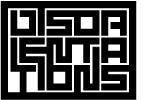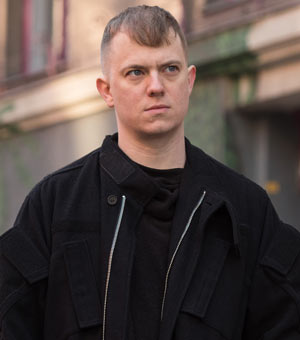A Report from ABC – Art Berlin Contemporary
by Travis Jeppesen on September 6, 2008
By now, anyone who has resided in Berlin for any length of time can tell you that all of this city’s “major art events” are the same. You tend to see, if not the same artists, then the same sort of work time and again, with perhaps one or two surprises thrown in. That’s about it. They’re always over-hyped, overrated, and overpopulated, and when attending one of these things – whether it be an art fair or a biennale – you’re always struck by the fact that, despite the large quantity of expertise on hand, these exhibitions are always suffocated by a deprivation of quality in favor of mere novelty.
Art Berlin Contemporary, which opened its doors this week as Berlin’s latest art fair and featuring all Berlin-based galleries, is no exception. While the atmosphere may be less business-like than that of Art Forum Berlin – booths have been abolished in favor of an open floor plan that highlights the art itself, rather than the galleries – the restrictive curatorial approach sought to exclude those working in the hopelessly passé fields of painting and photography in an effort to focus on sculpture, installation, and projected images.
Before I get called a sourpuss, I’d like to point out that the exceptional work I’ve seen at Art Berlin Contemporary. The steel tubes of Ayse Erkmen, subject of an upcoming solo exhibition at Hamburger Bahnhof, remind us that it’s still possible to do something great with next to nothing, as do the floor pieces by Matias Faldbakken, positioned not far from a monumental work by Carl Andre (the wooden Thrones from 1978.) I was also grateful for the chance to see Jimmie Durham’s new sculptural installation, In the air, long before archeology. Jürgen Drescher’s Money Talks installation from the 1980s brings back pleasant memories of the work of Cady Noland and other post-minimal sculptors. One of the few videos I liked, Macellvs L.’s untitle:rope, is projected on a 90-degree corner, and consists of nothing more than a body of water with an oar occasionally disrupting the flow.
I’ve written before about the general malaise that Berlin suffers from (there are plenty of examples scattered throughout my forthcoming book, Disorientations: Art on the Margins of the “Contemporary“.) To sum it up once more, the problem is an oxymoronic one, namely that Berlin is a large city that is also on the periphery. In the international art and news media, it is forever being portrayed as the capital of cool – without any real capital; the city nevertheless responds by playing up to that projected image, despite its meager resources. In the world of contemporary art, this entails an embrace of the “cutting-edge” that is essentially gestural and gimmicky, and winds up looking more like fashion, albeit with plenty of empty political slogans sewn in to give it a “radical” texture. Anyway, it’s Berlin we’re talking about here, so it doesn’t really have to sell anyway. Nearly every gallery represented at Art Berlin Contemporary merely has a branch in Berlin because it’s fashionable; the collectors like to come here for the weekend and slum it up with the jobless artists and fohos that latch on to them; the real business happens elsewhere. Hence, the charm of Berlin for the art world: Here, authenticity comes cheap, and on tap.
What both the media and contemporary art pundits worldwide have not been able to grasp is the real secret behind Berlin’s charm. You want to hear it, kids? Gather round. I’ll whisper it softly. Okay. You ready? Here it is: People leave you the fuck alone here.
Unlike self-proclaimed art world capitals like New York, where every artist is forced to become a whore in order to survive, Berlin allows you plenty of alone time to develop your work outside of the limelight. This is why you won’t see any of Berlin’s best artists represented in Art Berlin Contemporary – most of them are working outside of the official art world’s radar, and are doing just fine. They’ll be discovered eventually, sure, but they’re in no hurry, as they’re too busy making work and enjoying life – and yes, Berlin allows you to do both simultaneously, without starving to death. Events like Art Berlin Contemporary do a good job of concealing the reality of both life and art here to the larger art world, and Berliners largely ignore events like Art Berlin Contemporary, events that are more interested in pandering to the skewed perceptions of the masses than they are in representing the concerns of artists unable and unwilling to conform to the narrow standards of “the real Berlin.”


One comment
I’ve never had a studio with nerhtorn light, and I do most of my painting at night, so i’ve come to rely on artificial light sources. right now I use florescents that I researched a bunch for optimal light and temp. I’m sure if you do some searches you’ll find some more info as I can’t really remember specifics, but basically you should be concerned with both the kelvin (temp of the light, 5000k being in the middle) and the color accuracy (a scale of 1 to 100). I think the lights I use are Phillips Sunshine and are in the 5000k range at something like 88 on the color accuracy scale. since gallery lighting is generally very warm, i’ve found that warming up the light in my studio with one additional Reveal’ lightbulbs helps me to not overcompensate for the neutral light and paint flesh tones too warm.hope that helps!
by Mero on October 19, 2015 at 8:18 am. #